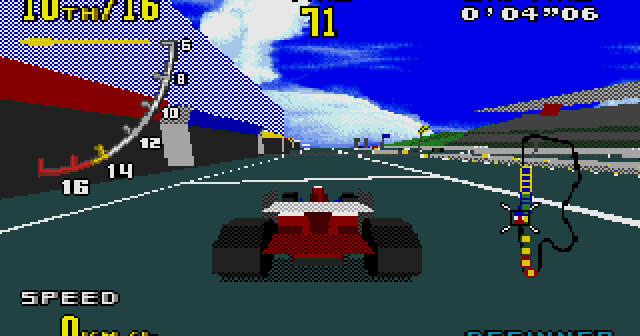curl-6 said:
zeldaring said:
Funny thing is I had a dreamcast but for some reason ps2 blew me away more. Certain games like mgs2 trailer and gran turismo 3 had my jaw on the floor, heck I owned a Xbox as well and resident evil 4 on ps2 impressed me more then anything on Xbox just shows how important art style is. I never saw resident evil 4 on GameCube but that must have been a sight to behold back then. Easily the best looking game of that generation imo. I think in that generation ps2 introduced new lighting tech while dreamcast did not. |
I'm not an expert but as far as I'm aware, Dreamcast did introduce new lighting tech; it was just less powerful than PS2 due to releasing over a year earlier, and didn't stick around long enough to benefit from a lot of the technical advances made during that generation. |
Dreamcasts graphics processor wasn't a full "GPU".
It relies on the CPU's (Albeit heavily overhauled and custom) floating point unit to feed to geometry data, not to different from the PS1. - But it's going to be perspective correct due to using 128, 64bit and 32bit floating point operations.
The GPU uses a tiled based deferred renderer which is extremely popular in the mobile space today due to it's bandwidth and power savings, it's also more efficient at culling and preventing over-draw, so it can do more rendering with less work.
What the Dreamcast lacked that would be a signature hardware feature later on in the generation, which was hardware TnL or also known as "Transform, clipping, and lighting".
The Original Xbox had super-seeded that with it's programmable pixel shaders that got standardised with the Xbox 360 and Playstation, so did the Gamecube with TEV... And of course the PC.
Which meant that if it wasn't for the Playstation 2 relying on its vector co-processor for TnL, the Dreamcast would have been at a distinct disadvantage for ports. (If it lasted the entire generation.)
Sometimes being first can be a disadvantage.
The Dreamcast did support light volume generation, parallel light source, point source, environmental lights, illumination for circular and non-circular sections and deferred rendering... Deferred rendering is the interesting one as that is what EA leveraged with Frosbite in a big way with Battlefield 3.
The Original Xbox had a couple of games that used Ray Traced lighting, such as shrek and conker which had single light ray bounce...
The hardware feature set of the Dreamcast probably was better aligned to the Nintendo 64 rather than other 6th gen consoles from a feature set perspective (Which was leagues ahead of the Saturn and PS1), obviously performance was a generational leap ahead which allowed some of those techniques to truly shine and catch up to the PC.
I think the biggest shame is that we didn't get a full generation with the Dreamcast, I would have loved to have seen what PowerVR could have done in the later half of the console generation... Same with the Original Xbox, we didn't really get to see those pixel shaders in their full leveraged glory as many games got shifted to the Xbox 360 fairly quickly. (Kameo, Perfect Dark Zero etc')

























































-4.jpg)



